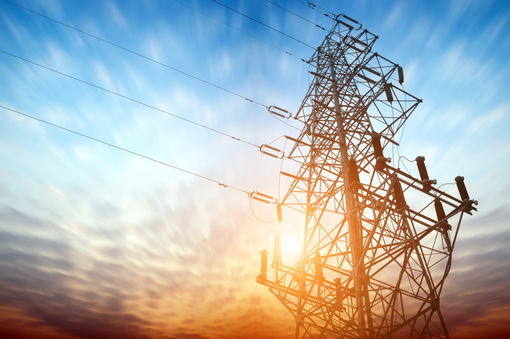By Pornphimol Winyuchakrit (Ph.D.)
Sustainable Energy and Low Carbon Research Unit
Sirindhorn International Institute of Technology, Thammasat University
ทำไมต้องใช้เทคโนโลยี “สมาร์ทกริด” ?
ระบบไฟฟ้าของโลกเผชิญกับความท้าทายในหลายด้าน ได้แก่ โครงสร้างพื้นฐานที่มีอายุมากขึ้น ความต้องการพลังงานที่เติบโตขึ้นอย่างต่อเนื่อง แหล่งพลังงานทางเลือกและการใช้ยานยนต์ไฟฟ้าที่เพิ่มมากขึ้น การพัฒนาความมั่นคงของแหล่งผลิตพลังงาน และการลดการปล่อยก๊าซเรือนกระจก ระบบการจ่ายไฟฟ้าในปัจจุบันเป็นการจ่ายไฟฟ้าไปในทิศทางเดียว (ดูรูปที่ 1) โดยโรงไฟฟ้าทำหน้าที่ผลิตไฟฟ้าจากแหล่งพลังงานต่าง ๆ เช่น ถ่านหิน น้ำมัน ก๊าซธรรมชาติ แหล่งพลังงานทดแทนขนาดใหญ่อื่น ๆ เป็นต้น จากนั้นไฟฟ้าที่ผลิตได้จะถูกส่งต่อไปยังสถานีย่อยเพื่อปรับแรงดันไฟฟ้าให้ลดลงเหมาะสมกับการใช้งาน และจึงจ่ายไฟฟ้าไปยังผู้บริโภคในภาคอุตสาหกรรม ภาคธุรกิจ และภาคที่อยู่อาศัย
ความท้าทายด้านการลดก๊าซเรือนกระจกเป็นอีกหนึ่งแรงขับเคลื่อนที่สำคัญในการพัฒนาระบบโครงข่ายไฟฟ้า การผลิตไฟฟ้าจากแหล่งพลังงานสะอาด เช่น พลังงานลม แสงอาทิตย์ น้ำ ชีวมวล ฯลฯ มีจำนวนเพิ่มมากขึ้น พลังงานน้ำและชีวมวลเป็นแหล่งพลังงานที่สามารถควบคุมได้ ในขณะที่พลังงานลมและแสงอาทิตย์เป็นแหล่งพลังงานที่ไม่สามารถควบคุมได้ ส่งผลต่อการวางแผนและเสถียรภาพของการผลิตไฟฟ้าในแต่ละช่วงเวลา ดังนั้นแนวความคิดในการนำเทคโนโลยีสมาร์ทกริดมาใช้เพื่อตอบสนองต่อการเปลี่ยนแปลงพฤติกรรมของผู้ใช้ไฟฟ้าได้อย่างทันท่วงทีจะสามารถช่วยลดการสูญเสียพลังงาน ต้นทุนการผลิต และเพิ่มประสิทธิภาพของระบบการผลิตไฟฟ้าได้อย่างชาญฉลาด

“สมาร์ทกริด” คืออะไร?
สมาร์ทกริด หรือที่เรียกกันในภาษาไทยว่า “โครงข่ายไฟฟ้าอัจฉริยะ” สามารถจ่ายไฟฟ้าได้ในสองทิศทาง (ดูรูปที่ 1) ระหว่างผู้ผลิตและผู้ใช้ไฟฟ้า ซึ่งผู้ใช้ไฟฟ้าสามารถมีบทบาทในการผลิตไฟฟ้า รวมถึงเปิดโอกาสให้ผู้ใช้ไฟฟ้าสามารถบริหารจัดการการใช้พลังงานไฟฟ้าให้เหมาะสมกับวิถีชีวิตและพฤติกรรมการใช้ไฟฟ้าของตนเองได้อย่างมีประสิทธิภาพ
สมาร์ทกริดเป็นระบบโครงข่ายไฟฟ้าทำหน้าที่เชื่อมโยงความสามารถการผลิตไฟฟ้าของผู้ผลิตและความต้องการไฟฟ้าของผู้ใช้ไฟฟ้า ให้ระบบผลิตสามารถตอบสนองต่อความต้องการของผู้ใช้ โดยการประยุกต์ใช้เทคโนโลยีระบบสื่อสารสารสนเทศ ระบบเซ็นเซอร์ ระบบเก็บข้อมูล และเทคโนโลยีทางด้านการควบคุมอัตโนมัติ ทําให้ระบบการผลิตไฟฟ้าสามารถรับรู้ข้อมูลสถานะความต้องการต่าง ๆ ในระบบมากขึ้น เพื่อใช้ในการตัดสินใจการผลิตอย่างอัตโนมัติ ซึ่งจะช่วยให้ระบบไฟฟ้ามีการดำเนินงานอย่างมีประสิทธิภาพมากที่สุด รวมทั้งลดค่าใช้จ่ายในการผลิตไฟฟ้าและผลกระทบทางสิ่งแวดล้อม ด้วยระบบการผลิตที่มีความน่าเชื่อถือ มีความยืดหยุ่น และมีเสถียรภาพมากที่สุด
ประโยชน์ของการใช้ “สมาร์ทกริด” ต่อภาคอุตสาหกรรม
เมื่อเทคโนโลยีสมาร์ทกริดถูกนำมาใช้งานจะทำให้ผู้ใช้ไฟฟ้าเกิดการรับรู้ข้อมูลการใช้ไฟฟ้าที่ไม่เคยตระหนักรู้เพิ่มขึ้น ยกตัวอย่างเช่น ผู้ใช้ไฟฟ้าจะทราบปริมาณการใช้ไฟฟ้าในแต่ละเดือนจากการจดมิเตอร์หรือจากใบแจ้งหนี้ค่าไฟฟ้า แต่เมื่อมีการติดตั้งสมาร์ทมิเตอร์จะทำให้ผู้ใช้ไฟฟ้าทราบปริมาณการใช้ไฟฟ้าในช่วงเวลาต่าง ๆ ได้ละเอียดมากขึ้น การนำข้อมูลดังกล่าวมาวิเคราะห์พฤติกรรมการใช้ไฟฟ้าจะช่วยให้ผู้ใช้ไฟฟ้าสามารถปรับเปลี่ยนพฤติกรรมการใช้ไฟฟ้าของตนเองไปสู่รูปแบบที่มีประสิทธิภาพมากขึ้น ทั้งในรูปแบบการลดความต้องการไฟฟ้าสูงสุดหรือการบริหารจัดการการใช้ไฟฟ้าในแต่ละช่วงเวลา
ประเทศไทยได้มีการดำเนินโครงการด้านสมาร์ทกริดไปบ้างแล้ว โดยเฉพาะโครงการนำร่องต่าง ๆ ในพื้นที่เมืองพัทยาและจังหวัดแม่ฮ่องสอน รวมทั้งมีการจัดทำแผนแม่บทการพัฒนาระบบโครงข่ายสมาร์ทกริดของประเทศไทย พ.ศ. 2558 – 2579 อย่างเป็นรูปธรรม ซึ่งหากระบบสมาร์ทกริดสามารถดำเนินงานได้อย่างเต็มรูปแบบแล้วนั้น เราจะสามารถพัฒนาประสิทธิภาพพลังงานได้อย่างเป็นระบบมากยิ่งขึ้น













